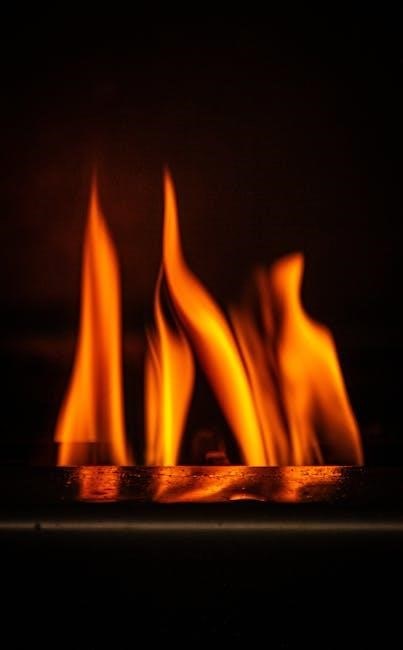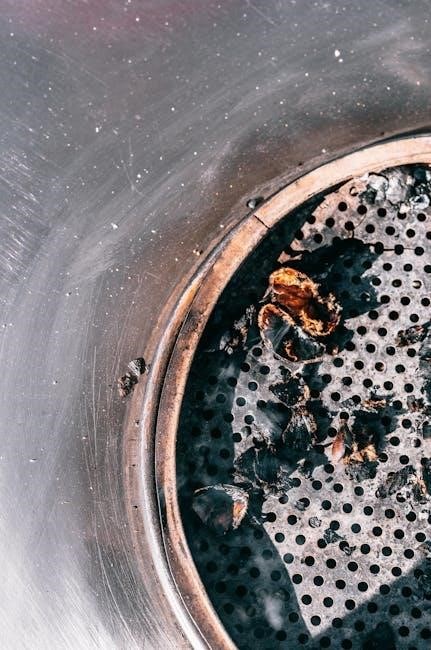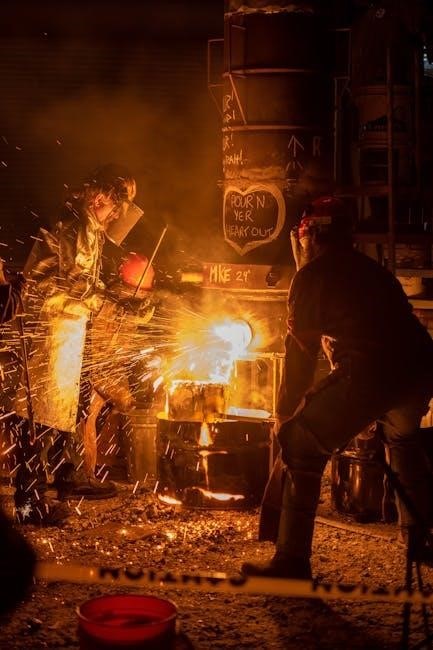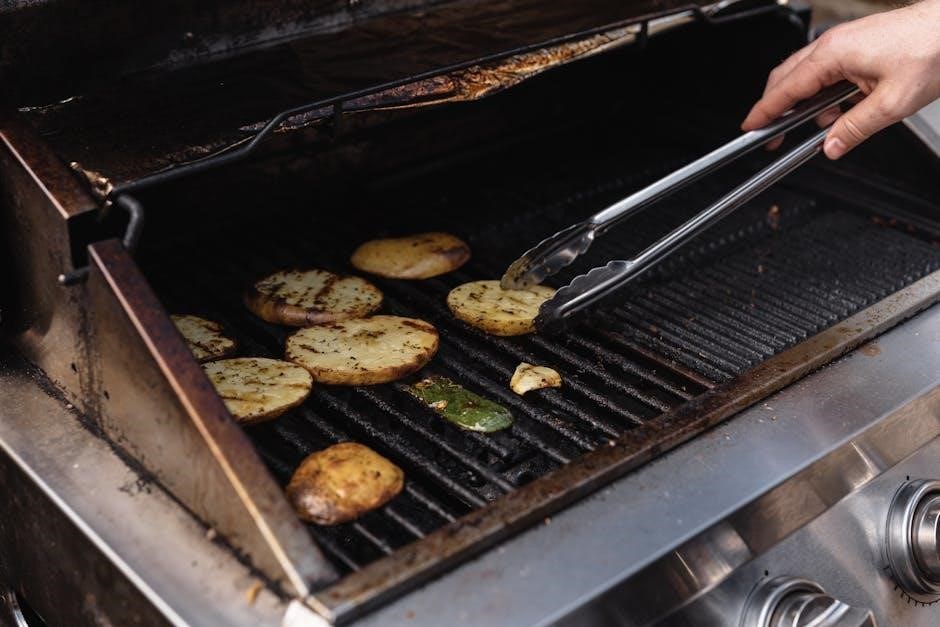Discover the essential temperatures and settings for heat pressing vinyl on various fabrics. Learn how time, temperature, and pressure impact results for professional-quality designs every time.
What is a Heat Press?
A heat press is a machine used to transfer designs, such as heat transfer vinyl (HTV), onto various materials like fabric, metal, and plastic. It applies heat, pressure, and time to ensure the design adheres permanently. Commonly used for custom apparel, signage, and crafts, heat presses are versatile tools in both professional and DIY settings. They consist of a heating element, a pressure plate, and controls for temperature and timing. Digital heat presses often include preset options and real-time monitoring for precise results. Unlike household irons, heat presses provide uniform pressure and heat distribution, making them ideal for intricate designs. Their popularity has grown with the rise of cutting machines like Cricut, enabling users to create professional-quality designs at home or in small businesses. Understanding how to use a heat press is crucial for achieving consistent, long-lasting results.
Importance of Temperature in Heat Pressing
Temperature is a critical factor in heat pressing, as it directly affects the adhesion and durability of the vinyl design on the fabric. Too low a temperature may result in incomplete bonding, while too high can damage the material or cause discoloration. Optimal temperature settings vary depending on the type of vinyl and fabric being used. For example, cotton typically requires higher temperatures than polyester blends. Using the correct temperature ensures a professional finish, prevents peeling, and extends the lifespan of the design. It is essential to follow manufacturer guidelines for specific vinyl types to achieve the best results. Proper temperature control also helps avoid common issues like cracking or fading over time. Always test a small area first to ensure compatibility and desired outcomes.
Key Factors in Heat Pressing: Time, Temperature, and Pressure
Success in heat pressing depends on three critical elements: time, temperature, and pressure. Each plays a unique role in ensuring a durable and professional finish. Time refers to how long the heat is applied, typically ranging from 10 to 30 seconds for most vinyl types. Temperature must be precisely set based on the vinyl and fabric type, with cotton requiring higher heat than polyester. Pressure ensures even contact between the vinyl and fabric; too little may result in incomplete adhesion, while too much can damage the material. Balancing these factors is essential for achieving crisp, long-lasting designs. Always consult the manufacturer’s guidelines for specific settings, as variations exist across materials. Proper calibration of these elements ensures optimal results and prevents common issues like peeling or discoloration.
Understanding Heat Transfer Vinyl (HTV)
Heat Transfer Vinyl (HTV) is a popular material for custom designs, applied using heat and pressure. It’s widely used for textiles, offering durability and vibrant finishes.
What is Heat Transfer Vinyl?
Heat Transfer Vinyl (HTV) is a versatile material used for creating custom designs on fabrics and other surfaces. It consists of a heat-activated adhesive backing that, when pressed with heat and pressure, bonds securely to the target material, such as cotton, polyester, or blends. HTV is widely popular for crafting, apparel decoration, and DIY projects due to its ease of use and durability. Available in various finishes like glossy, matte, metallic, and holographic, it offers vibrant, long-lasting results. The vinyl is cut into designs using cutting machines, and excess material is weeded away before pressing. HTV is a key component in heat pressing, requiring precise temperature and time settings for optimal adhesion and finish.
Types of Heat Transfer Vinyl
Heat Transfer Vinyl (HTV) comes in various types, each with unique characteristics and uses. Siser EasyWeed is a popular choice for its ease of use and durability, suitable for cotton and polyester blends. Thermoflex is another durable option, often used for high-quality, long-lasting designs. Metallic and holographic vinyls add shimmer and shine, perfect for eye-catching designs. Sublimation vinyl is used for vibrant, full-color transfers on specific fabrics. Each type requires specific temperature and pressure settings for optimal results. Understanding the differences helps in selecting the right vinyl for your project, ensuring professional-grade finishes and longevity of the design.

Preparation of HTV for Heat Pressing
Proper preparation of Heat Transfer Vinyl (HTV) is crucial for successful heat pressing. Start by cutting your design using a cutting machine or craft knife, ensuring the vinyl is mirrored for text. Weed the excess vinyl carefully, leaving only the desired design. Place the HTV on the fabric, ensuring it is centered and smooth. Preheat the fabric for 2-3 seconds to remove moisture and ensure proper adhesion. Use a heat-resistant pad to protect the work surface and prevent scorching. Always refer to the vinyl manufacturer’s instructions for specific preparation steps, as some materials may require additional care. Proper preparation ensures a professional finish and long-lasting results.

Temperature Guide for Different Fabrics and Vinyls
Adjust temperatures based on fabric type and vinyl specifications. Cotton fabrics typically require 300°F, while polyester blends may need higher heat. Specialty vinyls and materials vary widely.
Temperature Settings for Cotton Fabrics
Cotton fabrics are a popular choice for heat pressing due to their durability and versatility. The ideal temperature for pressing vinyl on cotton typically ranges between 280°F to 320°F (138°C to 160°C). For standard cotton fabrics, a temperature of 300°F (149°C) is often recommended. Pressing time usually ranges from 10 to 20 seconds, depending on the thickness of the vinyl and the specific design. It’s important to use medium to high pressure to ensure proper adhesion. Preheating the fabric for 2-3 seconds before pressing can help remove moisture and ensure a smooth finish. Always refer to the vinyl manufacturer’s instructions for precise settings, as some materials may require slight adjustments for optimal results.
Temperature Settings for Polyester and Blends
Polyester and polyester blends require lower temperatures than cotton to prevent scorching or melting. The recommended temperature range for heat pressing vinyl on polyester is typically between 240°F (115°C) and 270°F (130°C). The exact temperature depends on the specific blend and thickness of the fabric. For standard polyester, 260°F (127°C) is a common starting point. Pressing time usually ranges from 10 to 15 seconds, with medium pressure applied. It’s crucial to avoid overheating, as polyester fibers can degrade quickly. Preheating the fabric for 2-3 seconds can help ensure a smooth application. Always test a small, inconspicuous area first to verify the settings are safe for the material. Adjustments may be needed for specialized blends or sensitive fabrics.
Temperature Settings for Specialty Fabrics
Specialty fabrics like nylon, neoprene, or silicone-coated materials often require lower temperatures to prevent damage. The ideal range is typically between 200°F (90°C) and 250°F (120°C). Delicate fabrics may need preheating at 180°F (82°C) for 2-3 seconds to ensure proper vinyl adhesion without scorching. Pressing time is usually shorter, around 8-12 seconds, with light to medium pressure to avoid fabric distortion. It’s important to refer to the vinyl manufacturer’s guidelines, as some materials may require specific settings. Testing on a small, inconspicuous area is recommended to confirm compatibility; Adjustments may be needed for unique fabric compositions or sensitivity. Always prioritize fabric safety to achieve durable, professional results.
Temperature Settings for Different Vinyl Types
Heat press temperature settings vary depending on the vinyl type. Siser EasyWeed is a popular choice, typically requiring 300°F (149°C) for 15-20 seconds. Thermoflex and other standard vinyls often use similar settings. Glitter and metallic vinyls may need slightly lower temperatures, around 295°F (146°C), to prevent damage. Specialty vinyls, like holographic or reflective, might require even lower temperatures, such as 280°F (138°C), with shorter press times of 10-15 seconds. Always refer to the manufacturer’s guidelines for specific vinyl types, as some may have unique requirements. Testing a small sample is recommended to ensure proper adhesion and color vibrancy. Adjustments may be needed based on fabric type and thickness. Proper temperature settings ensure durability and professional results.

Time and Pressure Guidelines
Time and pressure are crucial for successful heat transfers. Standard press times range from 10 to 20 seconds. Adjust pressure based on material thickness and type. Ensure even pressure for proper adhesion. Test settings on scrap fabric before final application. Always follow manufacturer guidelines for optimal results.
Standard Time Ranges for Heat Pressing
Standard time ranges for heat pressing vary depending on the type of vinyl and fabric. Typically, heat pressing times range from 10 to 20 seconds for most standard vinyls. Thicker or specialty vinyls may require longer press times, up to 30 seconds. Always refer to the manufacturer’s instructions for specific recommendations. Proper time ensures the vinyl adheres evenly without overheating or peeling. For delicate fabrics, shorter times are recommended to prevent scorching. Testing on scrap fabric is a good practice to determine the optimal time for your project. Adjustments may be needed based on the heat press model and material thickness. Consistent results rely on precise timing and even pressure application.
Adjusting Pressure for Different Materials
Pressure plays a crucial role in heat pressing, varying by fabric type and vinyl thickness. Cotton and polyester blends typically require medium to high pressure, while delicate fabrics like silk or rayon need lighter pressure to avoid damage. Thicker materials, such as canvas or fleece, may require higher pressure for proper adhesion. Over-pressure can cause vinyl stretching or fabric distortion, while under-pressure may result in incomplete transfers. Use a test scrap to ensure the right pressure setting. For heat presses with manual adjustments, tighten or loosen the spring based on the material’s thickness. Automatic pressure-adjusting presses simplify this process, but manual models require careful calibration for consistent results. Always refer to the manufacturer’s guidelines for specific pressure recommendations tailored to your heat press model and material combination.

Tools and Accessories for Heat Pressing
Essential tools include a thermometer, timer, and pressure gauge for precise control. Heat-resistant pads, silicone mats, and craft cutters ensure smooth operations and professional results every time.
Essential Tools for Heat Pressing
A heat press is only as effective as the tools you use with it. A thermometer ensures accurate temperature readings, while a timer guarantees precise pressing durations. A pressure gauge helps maintain consistent force, crucial for even adhesion. Heat-resistant pads protect your work surface from damage, and silicone mats provide a smooth, non-stick surface for pressing. Craft cutters are necessary for cutting vinyl designs, and a weeding tool helps remove excess vinyl efficiently. Additional accessories like temperature test strips can help calibrate your press, ensuring optimal results. These tools collectively enhance the heat pressing process, making it easier to achieve professional-quality designs every time.
Using a Temperature Test Strip
A temperature test strip is a vital tool for ensuring accuracy in heat pressing. Place the strip on the press surface and close it to measure the actual temperature. The strip changes color to indicate if the heat press is within the desired range. This ensures proper vinyl adhesion and prevents fabric damage. Regular use helps maintain consistent results and extends the life of your press. Always refer to the strip’s color chart for accurate readings. By using this tool, you can troubleshoot temperature discrepancies and achieve optimal pressing conditions every time, ensuring your designs are flawless and long-lasting. This simple step can make a significant difference in the quality of your work.
Importance of a Heat-Resistant Pad
A heat-resistant pad is crucial for protecting fabrics from direct heat damage during the pressing process. It ensures even heat distribution and prevents scorching or discoloration of delicate materials. The pad acts as a barrier, safeguarding both the fabric and the press from excessive temperatures. Using a high-quality silicone or thick cardboard pad is recommended, as it withstands extreme heat without deforming. This accessory is essential for maintaining the longevity of your heat press and achieving professional-grade results. Without it, fabrics could suffer irreversible damage, and vinyl adhesion might be compromised. Always use a heat-resistant pad to ensure safe and effective heat pressing for all your vinyl projects.
Troubleshooting Common Issues
Common problems include vinyl not adhering, fabric scorching, or uneven pressing. Check temperature settings, ensure proper pressure, and verify vinyl type. Adjust settings as needed for optimal results.
Common Mistakes in Heat Pressing
One of the most frequent errors is using incorrect temperature settings for specific vinyl types or fabrics. This can lead to vinyl not adhering properly or fabric damage. Another mistake is insufficient pressure, resulting in uneven transfers. Overheating or underheating the press can also cause issues, such as vinyl melting or failing to bond. Additionally, not preheating the fabric or neglecting to use a heat-resistant pad can cause scorching or transfers that peel off quickly. Lastly, rushing the process by reducing press time can compromise the quality of the design. To avoid these mistakes, always refer to the vinyl manufacturer’s guidelines and test settings on scrap fabric before pressing the final design. Proper preparation and attention to detail are key to achieving professional results consistently. Using the right tools, such as a temperature test strip, can also help ensure accurate heat application. By understanding these common pitfalls, you can refine your technique and produce high-quality heat-pressed items every time. It’s important to remember that practice makes perfect, and even small adjustments can make a significant difference in the outcome. Always start with a lower temperature and gradually increase as needed, monitoring the results to find the optimal balance for your specific materials. This careful approach will help you avoid costly mistakes and ensure your designs look their best. Remember, consistency in temperature, pressure, and time is crucial for achieving the desired results in heat pressing.
Fixing Temperature-Related Problems
Temperature issues are common in heat pressing, but they can be easily resolved. If the vinyl isn’t adhering properly, it may be due to low heat; increase the temperature in small increments and test again. Conversely, if the vinyl peels or discolored, the temperature might be too high—reduce it slightly. Always preheat fabrics and use a heat-resistant pad to prevent scorching. Testing on scrap fabric first ensures the right balance. Additionally, consult the vinyl manufacturer’s guidelines for specific temperature ranges. For consistent results, invest in a temperature test strip to verify accuracy. Adjustments may also be needed for fabric thickness and color. Proper calibration of the heat press is crucial to avoid recurring problems. By fine-tuning your settings and following best practices, you can achieve flawless transfers every time and extend the life of your materials. Regular maintenance of your press will also help maintain precise temperature control. Remember, small adjustments can make a big difference in the quality of your work. Always prioritize testing and calibration to avoid wasted time and materials. This approach ensures professional-grade results and minimizes the risk of temperature-related issues.
Adjusting for Material Thickness and Color
Material thickness and color play a significant role in heat pressing. Thicker fabrics like polyester blends may require slightly higher temperatures to ensure proper vinyl adhesion, while thinner materials like cotton might need lower settings to prevent scorching. Darker fabrics often require a higher temperature to achieve vibrant colors without bleeding or discoloration. Conversely, lighter fabrics may need reduced heat to avoid over-transferring or peeling. Always test on scrap fabric to confirm settings. For colored vinyl, adjust time and pressure to prevent excessive heat from affecting the vinyl’s finish. Consulting the vinyl manufacturer’s guidelines ensures compatibility with fabric type and color. Proper calibration and preheating are essential for consistent results. By tailoring settings to material specifics, you achieve professional-grade transfers every time. This attention to detail minimizes errors and enhances durability. Adjusting for these factors ensures optimal adhesion and color retention, making your designs stand out. Regular testing and fine-tuning are key to mastering heat press techniques.

Advanced Techniques for Heat Pressing
Elevate your heat pressing skills with layering, multi-step temperature settings, and pre-heating fabrics. Achieve intricate designs and professional finishes by mastering these techniques for complex projects.
Layering Vinyl for Complex Designs
Layering vinyl allows for intricate and multi-colored designs. Start with the base layer, then add details, ensuring each layer is pressed at the correct temperature and time. Use a lower temperature for the first layer to prevent melting. Subsequent layers require higher heat to adhere properly without damaging previous layers. Always refer to the vinyl manufacturer’s guide for specific settings. Proper alignment and pressure are crucial to avoid air bubbles or peeling. Experiment with different vinyl types and colors to achieve unique effects. Practice on scrap fabric before working on final projects to perfect the technique and ensure seamless results every time.
Using Multiple Temperature Settings
Using multiple temperature settings is essential for complex designs involving different vinyl types. Start by preheating the fabric at a lower temperature to prevent scorching. Apply the base layer at a moderate heat, then increase the temperature for subsequent layers. Ensure each layer adheres properly without damaging previous ones. For example, metallic vinyl may require higher heat than standard vinyl. Use a temperature test strip to verify accuracy. Always allow the press to cool slightly between layers to avoid overheating. Refer to the manufacturer’s guidelines for specific vinyl types. This technique ensures vibrant, long-lasting designs with minimal risk of peeling or discoloration, making it ideal for intricate, multi-layered projects.

Pre-Heating and Pre-Creasing Fabrics
Pre-heating and pre-creasing fabrics are crucial steps in achieving professional results with heat transfer vinyl. Start by pre-heating the fabric at a lower temperature (around 250-300°F) for 2-3 seconds to remove moisture and relax the fibers. This step prevents scorching and ensures even adhesion. Next, pre-crease the fabric to eliminate wrinkles and create a smooth surface for the vinyl. Use a heat-resistant pad or parchment paper to protect the fabric during pre-heating. These steps are especially important for delicate or specialty fabrics like silk and nylon. Proper preparation ensures the vinyl adheres evenly and lasts longer. Always refer to the fabric type and vinyl instructions for specific pre-heating times and temperatures to avoid damage.
Mastering heat press temperatures ensures consistent, professional results. Always follow guidelines for fabrics and vinyl types, and prioritize safety with proper tools and protective gear.
Best Practices for Consistent Results

To achieve consistent results in heat pressing, always pre-heat fabrics to remove moisture and wrinkles, ensuring optimal vinyl adhesion. Use a heat-resistant pad to protect garments and prevent scorching.
Maintain accurate temperature and time settings based on fabric and vinyl types, as outlined in your guide. Avoid overloading the press, and ensure even pressure distribution for uniform transfers.
Test settings on scrap fabric before pressing final designs to ensure compatibility and desired outcomes. Keep your press clean and well-maintained to prevent residue buildup.
Refer to manufacturer guidelines for specific vinyl types and fabrics, as these often provide tailored recommendations. By following these practices, you can achieve professional-quality results every time.
Safety Precautions for Heat Pressing
Always wear protective gloves and eyewear when operating a heat press to prevent burns and eye injuries from accidental exposure to high temperatures.
Ensure proper ventilation in your workspace to avoid inhaling fumes or particles released during the pressing process.
Keep loose clothing or long hair tied back to avoid accidental contact with the press. Never leave the heat press unattended while it is in operation.
Avoid pressing flammable materials and ensure fabrics are free from chemicals or residues that could ignite under heat.
Unplug the press when not in use to prevent overheating or electrical hazards. Follow the manufacturer’s guidelines for temperature and pressure settings to avoid damage to equipment or injury.
Regularly inspect and maintain your heat press to ensure it functions safely and efficiently. Always use a heat-resistant pad to protect surfaces and prevent burns.
